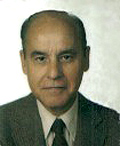Ben Tanosborn
April 29 marks a score since the “Los Angeles Riots,” sparked by a “not guilty” verdict rendered on four policemen accused of beating a black man, Rodney King, to a pulp.
For six days the nation witnessed via television these riots in South Central Los Angeles where 54 people lost their lives and over 2,000 others were injured, property damage escalating to one billion dollars. Eerily, in this same Watts location, riots had taken place a generation earlier (1965) which lasted five days, yielding 34 dead and over 1,000 injured.
Although in 1992 I was residing a thousand miles away from the rebellion’s site, I could identify with the pictures on the small screen, pictures that would take me back to the summer of 1965 when I lived in Huntington Park, then a white community bordering this battleground; most vividly, little-changed Florence, a street crossing the black community that I would drive through to enter the freeway on my way to the university. Compton, Watts… looting and arson taking place, when being seen with the white man’s eyes; yet seen by most of those who resided there as an uprising against an oppressive system imposed by the still alive and well slave master who kept the black man under his thumb. And all this was happening a century after the Civil War which had supposedly freed him; and a year after Congress had enacted the Civil Rights Act.
Here I found myself at the close of April 1992 reliving August 1965, listening this time to the ignominious comments made by a White House leadership which apparently still didn’t get it: “Papa” George Bush summarizing the events as terror and lawlessness; his Vice President “Evangelical” Dan Quayle giving the breakdown of family structure and personal responsibility as the root causes for the riots; and the press secretary politically blaming the “liberal” policies which had been implemented during the 60’s and 70’s as the reason for the riots.
This rebellion or insurrection as these riots were referred to by Maxine Waters, the African-American congresswoman for the district, was simply caused according to her by poverty and despair. And Bill Clinton, then on his way to the Democratic nomination for the presidency in eleven weeks [Jerry Brown had just committed the unpardonable sin of alienating the Jewish vote] had echoed that very sentiment giving the reason for the riots as a breakdown of economic opportunities and social institutions in the inner cities… for the riots in South Central Los Angeles had spread to other inner cities in the nation.
Nothing much had changed in Watts during those 27 years (1965-1992), poverty and unemployment remaining rampant, with the corresponding increase in despair as time marched on. Yes, there was a change… a cosmetic change of sorts: where in the 1965 riots the shopkeepers were white now, a generation later, they were Asian, Korean for the most part.
By late Saturday, May 2, the fourth day of civil unrest or insurgency, 10,000 National guards, 2,000 soldiers – tanks and all, and 1,500 marines had taken control of the streets, thousands of fires slowly consuming themselves; the riot period not called off, nor would the military leave, for yet another two days.
A post-riot detailed study by a Special Committee of the California Legislature, entitled To Rebuild Is Not Enough, gave meaningful, on-the-mark answers; causes that we knew all along but that we failed to address, act on, as a society which might care for all its members. Aside from the prevailing racism which sadly remains as part of our culture – be it open or hidden – the causal variable was found to be economic and which brought about the conditions of poverty, segregation, lack of educational and employment opportunities, and unequal access to consumer goods and services. Given these conditions, and the profiling and police abuse that African-Americans had to endure, would anyone expect anything other than a tinderbox of frustrations ready to be set off by the spark of some wrong-doing, in this case a more than questionable verdict? And… are things that much different today, 20 years later?
Things are much different in this 2012 America than they were back in 1992; maybe not so much for the African-American community, but for that ever-growing portion of middle-class America which has been forced to join the lower economic ranks, to find commonality with a minority who lived for generations in poverty and despair. Does it mean that much of middle-class America will soon be ripe for riots and rebellion against the holders of wealth and power who are dispossessing them and exiling them to poverty-land?
Not likely to happen soon! Two days ago I was exchanging ideas with one of the “informal” leaders of the Occupy Movement in Portland (Oregon) now trying to launch a spring offensive, but finding that the police has been vested with a new protective aura that is sure to make protesters’ peaceful but non-conforming behavior run afoul of the law, thus landing them all in jail. A spring offensive, I told my idealistic young friend, might work well for the Taliban, but seemed rather pyrrhic when change can only come about through riots and rebellion… all leading to a revolution which will bring about the devolution of power to the people.
Learning together as a nation freedom’s 3-R’s is going to be a long and painful process, but we must start soon before we find ourselves having crossed the turnstile into global economic slavery without a chance for return.
Ben Tanosborn is a syndicated columnist. He can be reached at tanosborn@yahoo.com
Ben’s website: www.tanosborn.com
